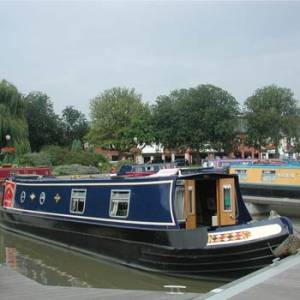
Navigators & General and River Canal Rescue highlight risks of reduced water levels
With warnings of dropping water levels on lakes reservoirs and canals, (intended or otherwise) Navigators & General is urging caution on the part of with the increased risk of groundings.
Historically on lake Windermere we have always seen a rise in the number of underwater gear claims as boat owners collide with rocks or other obstructions that are normally at a safe depth. Often it is the more experienced owners who are at risk due to complacency with the local waters.
Such claims can be very expensive, and in extreme cases lead to sinking which can also have dire implications for the environment. N&G would urge owners to watch lake levels closely, and should water levels drop take extra care to try and identify shallow areas of the lakes or known obstructions and give them a wide berth
With warnings of reducing water levels on canals and rivers Navigators & General and River Canal Rescue are urging caution due to the increased risk of groundings and associated damage, one of N&G’s most common claims*
Prolonged lack of rain, leaks and high lock usage are all contributory factors, and their effects can vary from region to region. Even though the speeds are low there is still a risk of damage to boat or machinery, aborted journeys and plain embarrassment through being unprepared for the risk that low water levels present.
Weeds, tree debris and rubbish which would otherwise sit in the bottom silt will be far more likely to come into contact with the hull, propeller and rudder. The consequences can range from a much slower journey, so serious damage to underwater gear, or a fouled propeller.
For those boats with water cooled engines the risk of ingesting fouled water which can lead to overheating, a broken impellor or block in the engine itself are a big risk is shallow waters, especially if high revs are used.
Owners need to try and be aware of water levels on the stretch of water they are using, exercise caution if levels seem low and try and avoid the obvious shallow areas. You may need to re acquaint yourself with the weedhatch and methods to clear a fouled propeller.
Remember to ensure that the boat is securely moored, the engine is off (ideally battery of and key out) and you have a pair of gloves handy. Finally make sure the weedhatch is correctly replaced after as failure to do so can lead to sinking. You may want to mark a reference point on the hatch and lid.
RCR have already logged over 20 callouts in the last few months where grounding was the initial cause of the problem, low water levels, sand banks and obstacles on the Thames, Fens and Trent have caught out many experienced boaters.
If you do become grounded here a few tips which can help depending on severity of the grounding:
If the bow is aground; put engine in reverse, and move all crew to the stern, if still stuck fast and water tanks are at the front of the boat – turn taps on and release water.
If the stern is grounded whilst in astern put the engine in forward and transfer crew to the bow. If the stern is grounded whilst moving forward put the engine in reverse– and move all crew to the bow of the boat and move astern carefully.
For both situations if the boat cannot be released, turn off the engine, contact the local waterways authority and find out when the water levels will change or if there is the possibility of releasing more water. Occasionally they may have a work boat that can attend. If a passing boater offers to assist, follow the general rule and ‘pull the boat back in the direction it entered’.
If you have suffered a grounding, always check your weed hatch for propeller obstruction, the water trap and impeller for blockages – quick check; is water still coming out of exhaust or water outlet?. If there are any signs of overheating moor up immediate and investigate or ask an engineer to attend.
The risk of hitting underwater obstacles also increases as water levels drop, if you hit an obstacle you may find that the engine cuts out, or that you hear an unusual noise, or that the engine misses a beat, or vibration suddenly increases.
If this occurs moor up and check your propeller for obstruction or damage and once on the move again be aware of chattering or crunching noises coming from gearbox, leaks in the bilges or an increase in vibration, as these are all classic signs that further damage may have occurred.
It is worth remembering that the Fens, Broads, Trent and Thames waterways are subject to varying water levels which can catch any boater unawares. Ensure you are aware which waterway are subject to change and touch base with the local waterways authority if you are unsure.
The key to cruising during low water levels is to keep speed to a minimum, as speed will tend to pull the stern lower in the water and thus increasing the risk of pulling debris in to water intakes, or grounding the boat, it also has the added benefit of giving you time to make manoeuvres and reduce the severity of grounding should you experience problems.
For further information contact:
Stephanie Horton, MD River Canal Rescue,
t: 0870 2008021 e: sho@rivercanalrescue.co.uk

